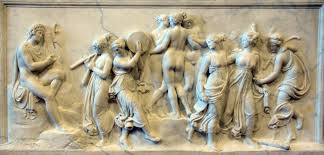Rome allowed the foreign arts of music and dance to dominate their culture since Roman citizens considered performing on the stage beneath them. In the beginning, religious dances were practiced, and many of these were of Etruscan origins, such as the Lupercalia, and the Ambarvalia.
In the former the dancers were semi-nude, and more rurally ritual; the latter was a serious dancing procession through fields and villages. No Roman citizen danced except in the religious dances.
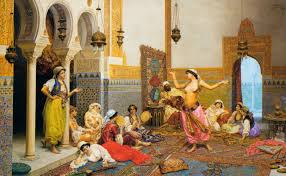
As the State increased in power, it absorbed other countries’ habits, practices, and arts; religious dancing gave away to public entertainment. Dances in theatres, masked orgies (parties) became common.
Types of Dances
Tragic dance preceded tragic drama. The Cordax was the dance associated with comedy.
Pantomimes involved miming roles to accompaniment of singers, dancers, and musicians, in addition to visual effects, similar to a ballet. A pantomime was a dramatic performance whose subject was taken from Greek mythology. There was a chorus of singers, an orchestra, and an elaborate stage setting.
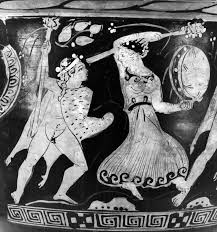
The chief dancer told the whole story by gestures and conventional signs and portrayed each character in turn. Dance had two elements: movement, which could be taught to anyone and gesture, which was reserved for professional dancers. Women were allowed in mimes and pantomimes, which were more popular than typical plays.
Bacchanal Dance
This form of dance was dedicated to the god of wine known as Dionysus, Bacchus or Libor as his rites of revelry grew in popularity and practice throughout the empire. It was performed at entertainments, in Rome as well as in Greece, by courtesans, many of whom were of a lascivious nature with the male dancer representing Bacchanals (Bacchus).
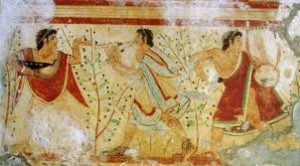
Etruscan Dances and Practices: The Phoenicians and Greeks had an immense influence on the Etruscans; there is little doubt that they were dancers in every sense.
They considered dancing as one of the emblems of joy in a future state, and that the dead were received with dancing and music in their new home. They danced to the music of the pipes, the lyre, and castanets of wood, steel, or brass. Romans adopted the Etruscan practices of funeral dancing.
Ancient Rome dance facts
A Great Dance of a severe kind was executed by the Salii, priests of Mars, an ecclesiastical corporation of twelve chosen patricians. In their procession and dance, on March 1, and succeeding days, carrying the Ancilia, they sang songs and hymns and afterward retired to a great banquet in the Temple of Mars.
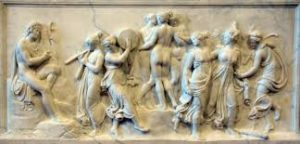
That the practice was originally Etruscan may be gathered from the circumstance that on a gem showing the armed priests carrying the shields there are Etruscan letters. There was also an order of female Salii.
Military Dance: called the Saltatio Bellicrepa, was said to have been instituted by Romulus in commemoration of the Rape of the Sabines.
